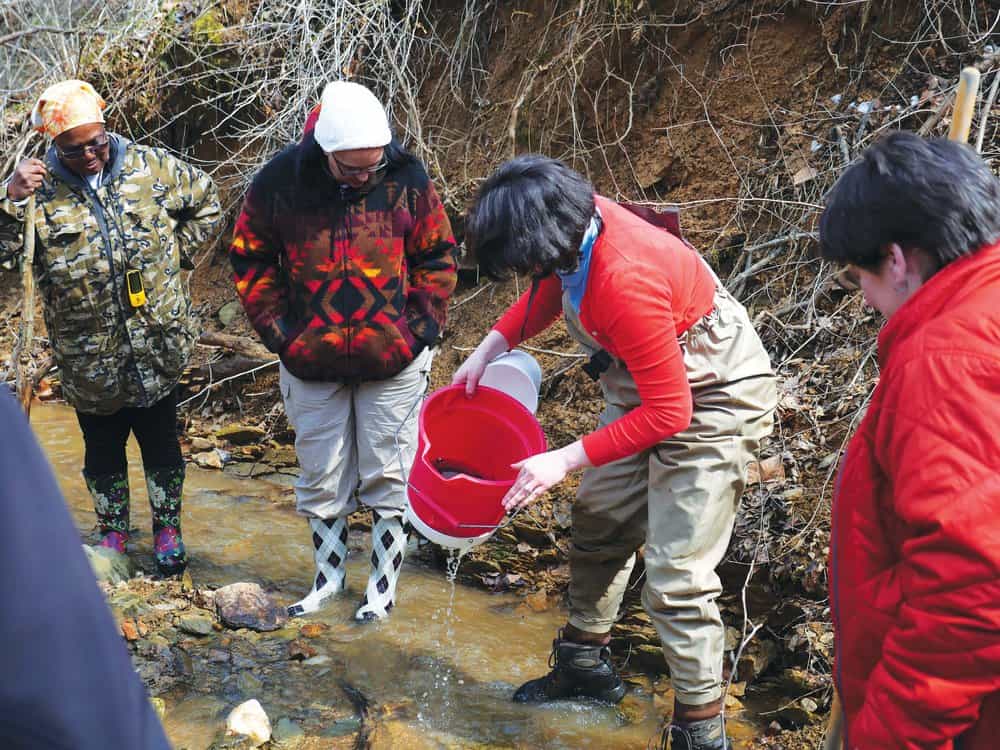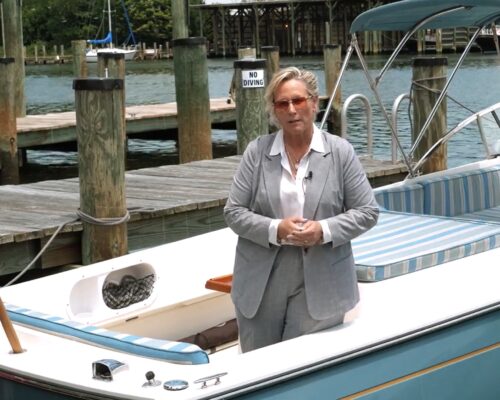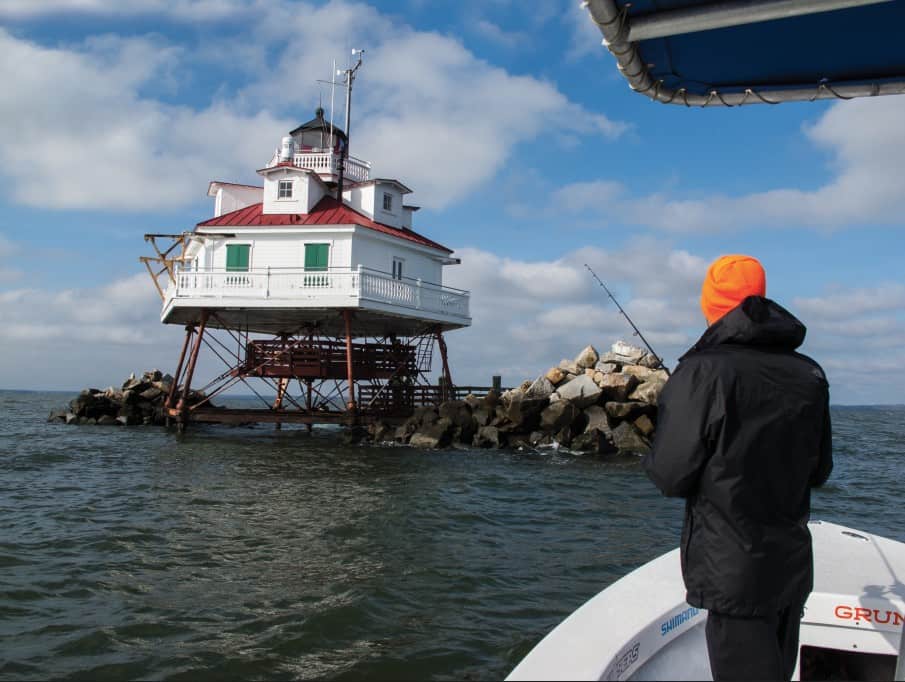Grab a bucket and net, and hoist up your waders, folks, it’s time to get dirty! About three times a year, volunteers participating in the Department of Natural Resources’ (DNR) Stream Waders program test stream health and other ecological barometers by sampling water from local streams and collecting benthic macroinvertebrates
(stream bugs).
Stream Waders is the volunteer component of the Maryland Biological Stream Survey, or MBSS. Sampling is done in the spring during the same time volunteer training occurs. The Stream Survey samples each watershed (and smaller subwatersheds) in Maryland every five years.
“Our first year, we noticed that in each watershed, there were a lot of subwatersheds missing,” says DNR biologist and Stream Wader coordinator Sara Weglein. “We had no information from them. So we decided that volunteers were a good way we could get more information. We think of Stream Waders as filling in the blanks.”
Volunteers receive training from MBSS biologists and learn about basic stream ecology, diversity and safety procedures. They then form into teams and prepare to get wet.
The goals of the program are to identify potential problems in streams, increase density of sampling sites for assessment use, educate the local community about the relationship between land use and stream quality, report quality information to agencies and organizations, and generate local action and stream stewardship ethics. Essentially, Stream Waders volunteers act as backup biologists.
“By looking at these bugs, we can really get an idea of what’s going on in the streams,” Weglein says. “With the limits of time and money, the biologists can’t be everywhere they want to be. But with volunteers, we can get out to so many places and get a better idea of what is going on in those streams.”

Volunteers are taught what initially causes stream pollution, (mostly urbanization and impervious surfaces). They are also given tips on what we can do to reduce stream pollution, such as clean up after pets, plant a tree, avoid fertilizing grass, and avoid mowing to the edge of a stream, to name a few.

“In the long term we are generally hoping to continue to monitor and provide good scientific data,” Weglein says. “One of the main things is to increase stewardship and encourage local action. We do that by providing citizens and local watershed groups the tools and information that they need to know where their action should be directed.”
The Chesapeake Bay Program has embraced the information collected by the volunteers and uses it alongside data collected by nonprofits and professionals studying watersheds in Maryland.
“Over the years, I think we’re reached over 7,000 sampling points,” says Dan Boward, one of the Stream Waders Program founders. “Just from sheer numbers we’ve learned a lot about where the real healthy streams are and where those that are degraded by various sources stressors are.”
Stream Waders and MBSS data are posted on the Maryland stream health website (www.dnr.maryland.gov/streams/Pages/streamhealth/default.aspx), which provides an interactive map that allows people to search a certain stream through an address or landmark and reveals the stream’s health.
“I would say the biggest takeaway for the volunteers is getting out into nature and learning things they didn’t know before,” Boward says. “Especially for those who really haven’t been exposed to creatures in streams and rivers, they’re fascinated by those little invertebrates that we sample. It gives them a better idea of what these animals look like and their importance in stream ecosystems.”
Stream Waders welcomes volunteers young and old and from all over Maryland. “We’ve had several younger folks go through the program,” Boward says. “It’s a good teaching tool for youngsters, parents, teachers and students.”
The program has been educating Marylanders for 18 years now and draws about one hundred volunteers each year. The full 2017 schedule has yet to be announced, but Chuck Hatcher of Wheaton, Md., knows he’ll be
in attendance:
“I grew up with my dad teaching me how to fish, so I’ve always been oriented to the water,” Hatcher says. “I just enjoy being out there.”

Hatcher volunteers at the Jug Bay Wetlands Sanctuary and Greenbelt International Park, where he does trail maintenance, river cleanup, aquatic vegetation sampling and invasive species control. Being a loyal Stream Waders volunteer is just another way he enjoys getting out on the water and learning about stream health and diversity.
“When you get a scoop of water that has dozens of different kinds of bugs in it, then you know the stream is pretty healthy,” Hatcher says. “That’s important to know. Clean water is vital
to everyone.”
To become a Stream Wader, visit www.dnr.maryland.gov/streams/Pages/streamWaders.aspx and fill out the volunteer form. The first training session will be February 25 at the Smithsonian Environmental Research Center in Edgewater, Md.
—Taylor Bromante




